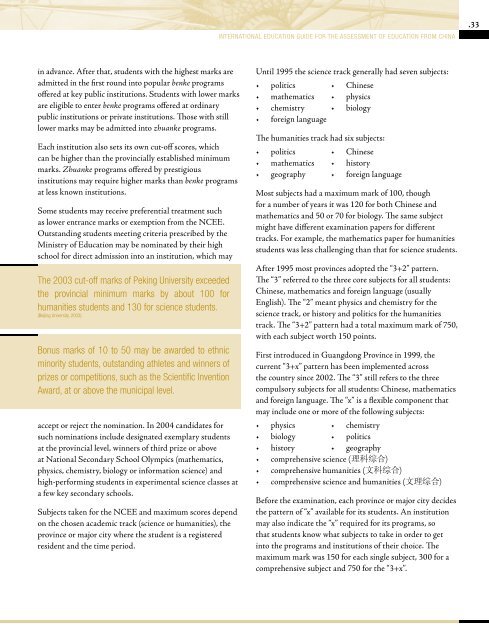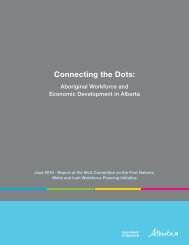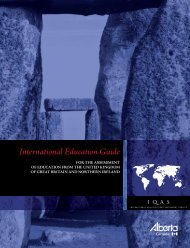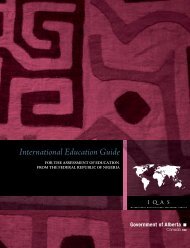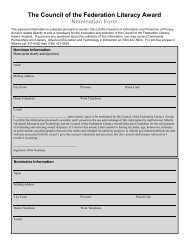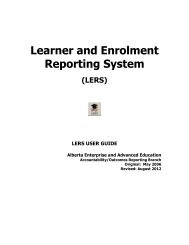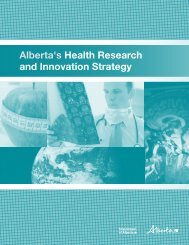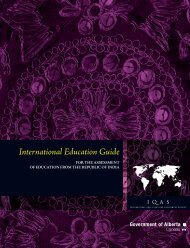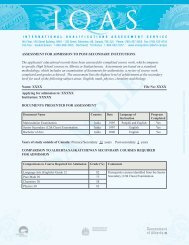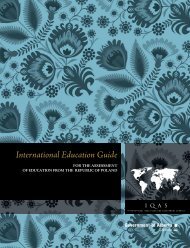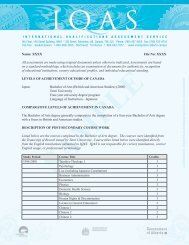International Education Guide - China - Enterprise and Advanced ...
International Education Guide - China - Enterprise and Advanced ...
International Education Guide - China - Enterprise and Advanced ...
Create successful ePaper yourself
Turn your PDF publications into a flip-book with our unique Google optimized e-Paper software.
INTERNATIONAL EDUCATION GUIDE FOR THE ASSESSMENT OF EDUCATION FROM CHINA<br />
.33<br />
in advance. After that, students with the highest marks are<br />
admitted in the first round into popular benke programs<br />
offered at key public institutions. Students with lower marks<br />
are eligible to enter benke programs offered at ordinary<br />
public institutions or private institutions. Those with still<br />
lower marks may be admitted into zhuanke programs.<br />
Each institution also sets its own cut-off scores, which<br />
can be higher than the provincially established minimum<br />
marks. Zhuanke programs offered by prestigious<br />
institutions may require higher marks than benke programs<br />
at less known institutions.<br />
Some students may receive preferential treatment such<br />
as lower entrance marks or exemption from the NCEE.<br />
Outst<strong>and</strong>ing students meeting criteria prescribed by the<br />
Ministry of <strong>Education</strong> may be nominated by their high<br />
school for direct admission into an institution, which may<br />
The 2003 cut-off marks of Peking University exceeded<br />
the provincial minimum marks by about 100 for<br />
humanities students <strong>and</strong> 130 for science students.<br />
(Beijing University, 2003).<br />
Bonus marks of 10 to 50 may be awarded to ethnic<br />
minority students, outst<strong>and</strong>ing athletes <strong>and</strong> winners of<br />
prizes or competitions, such as the Scientific Invention<br />
Award, at or above the municipal level.<br />
accept or reject the nomination. In 2004 c<strong>and</strong>idates for<br />
such nominations include designated exemplary students<br />
at the provincial level, winners of third prize or above<br />
at National Secondary School Olympics (mathematics,<br />
physics, chemistry, biology or information science) <strong>and</strong><br />
high-performing students in experimental science classes at<br />
a few key secondary schools.<br />
Subjects taken for the NCEE <strong>and</strong> maximum scores depend<br />
on the chosen academic track (science or humanities), the<br />
province or major city where the student is a registered<br />
resident <strong>and</strong> the time period.<br />
Until 1995 the science track generally had seven subjects:<br />
• politics • Chinese<br />
• mathematics • physics<br />
• chemistry • biology<br />
• foreign language<br />
The humanities track had six subjects:<br />
• politics • Chinese<br />
• mathematics • history<br />
• geography • foreign language<br />
Most subjects had a maximum mark of 100, though<br />
for a number of years it was 120 for both Chinese <strong>and</strong><br />
mathematics <strong>and</strong> 50 or 70 for biology. The same subject<br />
might have different examination papers for different<br />
tracks. For example, the mathematics paper for humanities<br />
students was less challenging than that for science students.<br />
After 1995 most provinces adopted the “3+2” pattern.<br />
The “3” referred to the three core subjects for all students:<br />
Chinese, mathematics <strong>and</strong> foreign language (usually<br />
English). The “2” meant physics <strong>and</strong> chemistry for the<br />
science track, or history <strong>and</strong> politics for the humanities<br />
track. The “3+2” pattern had a total maximum mark of 750,<br />
with each subject worth 150 points.<br />
First introduced in Guangdong Province in 1999, the<br />
current “3+x” pattern has been implemented across<br />
the country since 2002. The “3” still refers to the three<br />
compulsory subjects for all students: Chinese, mathematics<br />
<strong>and</strong> foreign language. The “x” is a flexible component that<br />
may include one or more of the following subjects:<br />
• physics • chemistry<br />
• biology • politics<br />
• history • geography<br />
• comprehensive science ( 理 科 综 合 )<br />
• comprehensive humanities ( 文 科 综 合 )<br />
• comprehensive science <strong>and</strong> humanities ( 文 理 综 合 )<br />
Before the examination, each province or major city decides<br />
the pattern of “x” available for its students. An institution<br />
may also indicate the “x” required for its programs, so<br />
that students know what subjects to take in order to get<br />
into the programs <strong>and</strong> institutions of their choice. The<br />
maximum mark was 150 for each single subject, 300 for a<br />
comprehensive subject <strong>and</strong> 750 for the “3+x”.


